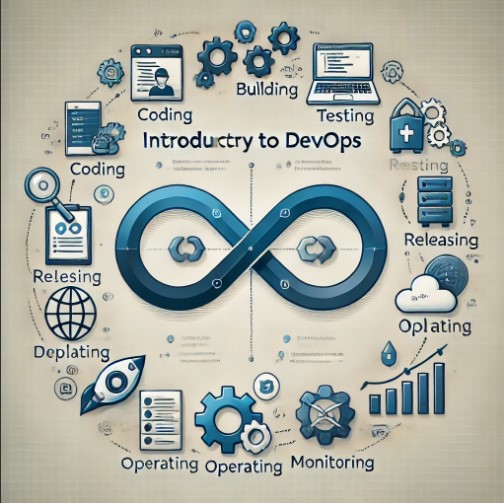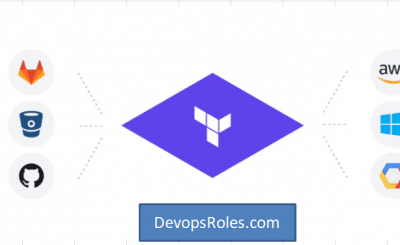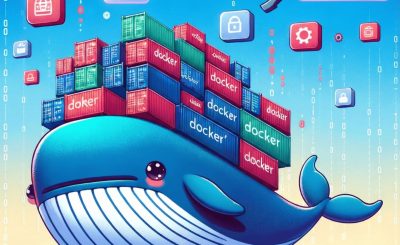Table of Contents
Introduction to DevOps
DevOps is a methodology that bridges the gap between software development and IT operations. Its primary goal is to enhance collaboration between these two traditionally siloed departments, resulting in faster deployment cycles, improved product quality, and increased team efficiency. This approach fosters a culture of shared responsibility, continuous integration, and continuous delivery (CI/CD), helping businesses adapt to changes rapidly and provide more reliable services to customers.
In this article, we will explore the basics of DevOps, its significance in modern software development, and how it works. We will dive into its key components, popular tools, and answer some of the most frequently asked questions about DevOps.
What is DevOps?
DevOps combines “Development” (Dev) and “Operations” (Ops) and represents a set of practices, cultural philosophies, and tools that increase an organization’s ability to deliver applications and services at high velocity. This approach enables teams to create better products faster, respond to market changes, and improve customer satisfaction.
Key Benefits of DevOps
- Increased Deployment Frequency: DevOps practices facilitate more frequent, smaller updates, allowing organizations to deliver new features and patches quickly.
- Improved Quality and Stability: Continuous testing and monitoring help reduce errors, increasing system stability and user satisfaction.
- Enhanced Collaboration: DevOps emphasizes a collaborative approach, where development and operations teams work closely together, sharing responsibilities and goals.
- Faster Recovery Times: With automated recovery solutions and quicker issue identification, DevOps helps organizations reduce downtime and maintain service quality.
Key Components of DevOps
1. Continuous Integration (CI)
Continuous Integration is a practice where developers frequently commit code to a central repository, with automated tests run on each integration. This process ensures that code updates integrate seamlessly and any issues are detected early.
2. Continuous Delivery (CD)
Continuous Delivery extends CI by automating the release process. CD ensures that all code changes pass through rigorous automated tests, so they are always ready for deployment to production.
3. Infrastructure as Code (IaC)
Infrastructure as Code involves managing and provisioning computing infrastructure through machine-readable configuration files rather than manual processes. Tools like Terraform and Ansible allow teams to scale and deploy applications consistently.
4. Automated Testing
Automated testing helps validate code quality and functionality. Through automated testing, teams can catch errors before they reach production, improving reliability and performance.
5. Monitoring and Logging
Monitoring and logging are essential to DevOps as they provide insights into application performance. Tools like Prometheus and Grafana allow teams to track real-time performance and detect issues before they impact users.
Common DevOps Tools
The DevOps landscape is vast, with numerous tools for every stage of the lifecycle. Here are some of the most popular DevOps tools used today:
- Version Control: Git, GitHub, GitLab
- Continuous Integration and Delivery (CI/CD): Jenkins, CircleCI, Travis CI
- Configuration Management: Ansible, Puppet, Chef
- Infrastructure as Code (IaC): Terraform, AWS CloudFormation
- Monitoring and Logging: Prometheus, Grafana, ELK Stack (Elasticsearch, Logstash, Kibana)
These tools help automate various tasks and facilitate seamless integration between development and operations.
How DevOps Works: A Practical Example
Let’s walk through a typical DevOps pipeline for a web application development project.
- Code Commit (Git): Developers write code and commit changes to a version control system like GitHub.
- Build and Test (Jenkins): Jenkins pulls the latest code from the repository, builds it, and runs automated tests.
- Infrastructure Provisioning (Terraform): Terraform provisions the necessary infrastructure based on the code requirements.
- Deployment (Kubernetes): After testing, the application is deployed to a Kubernetes cluster for scaling and container orchestration.
- Monitoring (Prometheus and Grafana): The deployed application is monitored for performance, and alerts are set up to detect potential issues.
This pipeline ensures code quality, scalability, and reliability, while minimizing manual intervention.
Frequently Asked Questions about DevOps
What are the main benefits of DevOps?
DevOps improves collaboration, speeds up deployment cycles, and increases software quality, which collectively enhance customer satisfaction and operational efficiency.
Is DevOps only for large companies?
No, DevOps can be implemented by organizations of all sizes. Small teams may even benefit more as DevOps encourages efficient processes, which are essential for growth and scalability.
What is CI/CD?
CI/CD, short for Continuous Integration and Continuous Delivery, is a DevOps practice that automates code integration and delivery. CI/CD helps teams deliver software updates faster with fewer errors.
How does DevOps differ from Agile?
While Agile focuses on iterative development and customer feedback, DevOps goes beyond by integrating the development and operations teams to streamline the entire software delivery lifecycle.
Which programming languages are commonly used in DevOps?
Languages like Python, Ruby, Bash, and Groovy are popular in DevOps for scripting, automation, and tool integration.
External Resources for Further Learning

Conclusion
DevOps has transformed how software is developed and delivered by fostering collaboration between development and operations teams. By automating key processes, implementing CI/CD, and using Infrastructure as Code, DevOps enables organizations to deploy high-quality software quickly and efficiently. Whether you’re a developer, a sysadmin, or a business looking to adopt DevOps, the principles outlined in this article provide a strong foundation for understanding and applying DevOps effectively in any environment.
DevOps is not just a set of tools; it’s a culture and philosophy that drives innovation, speed, and reliability in software delivery. Start exploring DevOps today and see how it can revolutionize your approach to software development and operations. Thank you for reading the DevopsRoles page!


